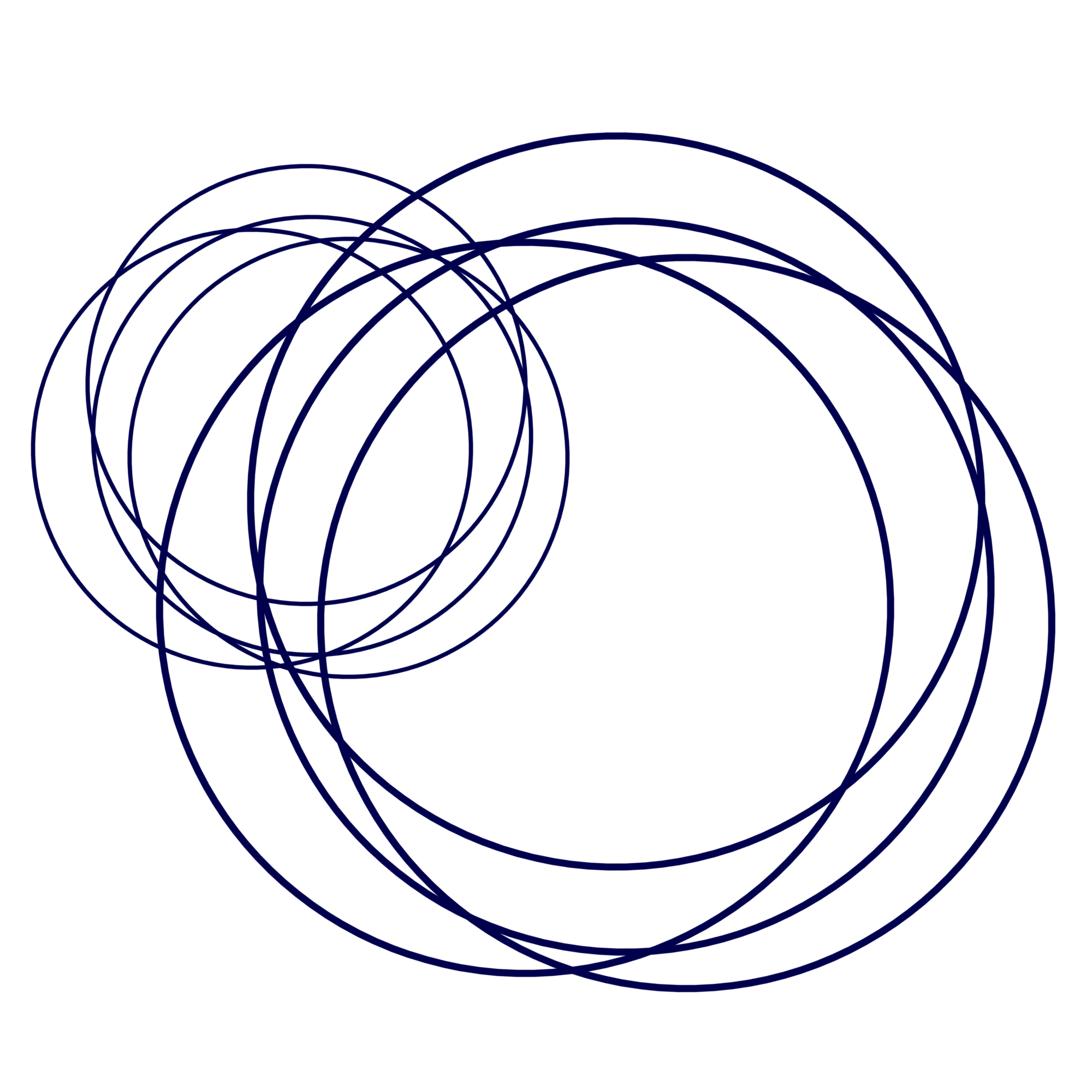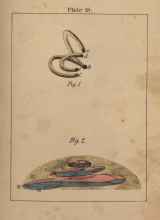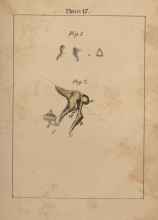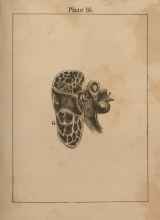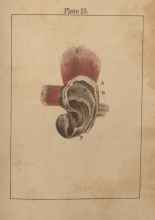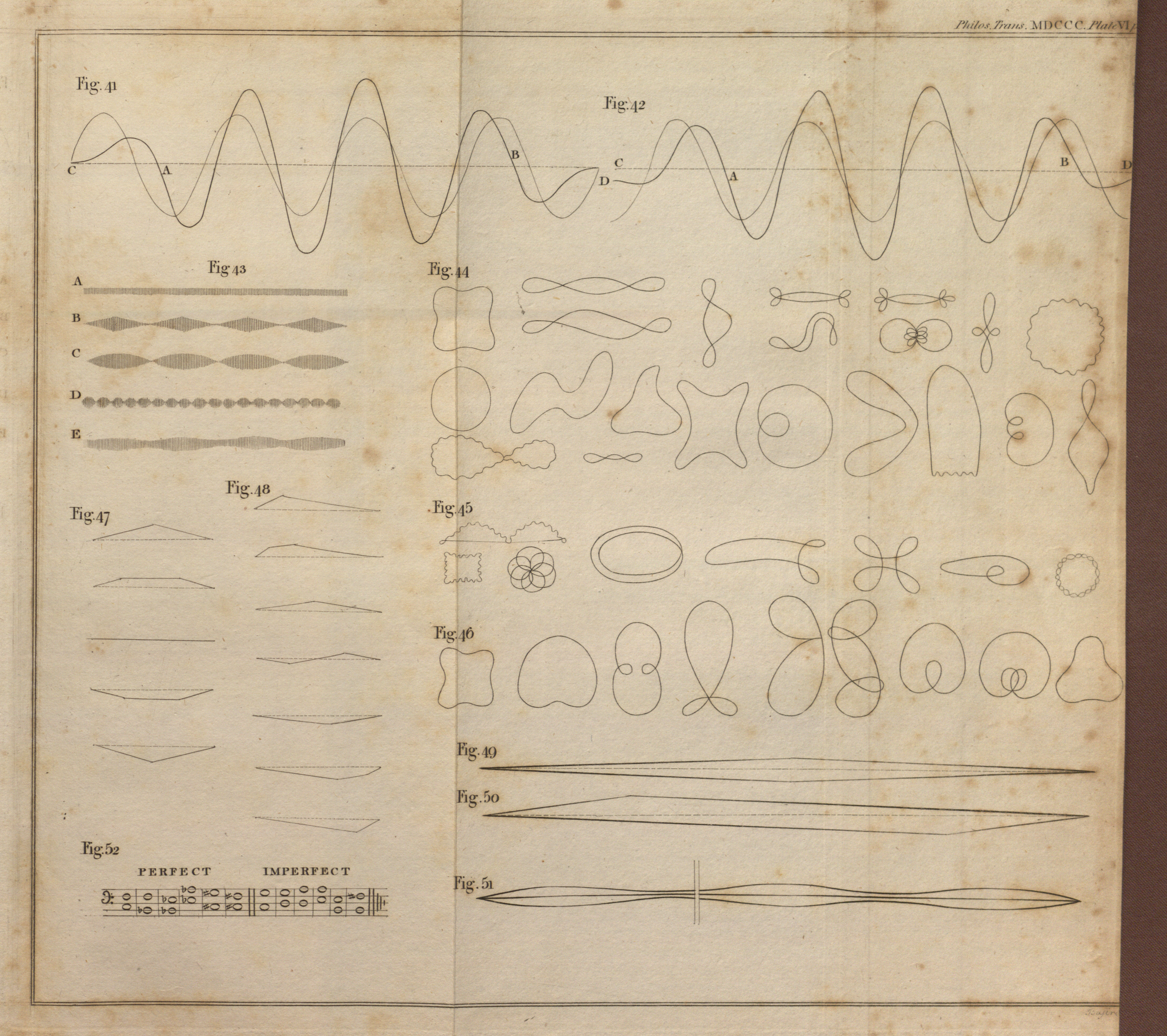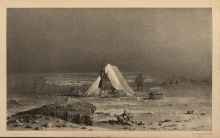Treatise on Sound, Plate 3
This scientific diagrams depicts "vibrations in solid bodies," including rods and plates. In the image, Herschel presents readers with another set of experiments that helps them conceptualize the movement of sound through space, again depending on the visual. Figures 36-41 involve the vibrations of a rod either resting against a wall or free.
